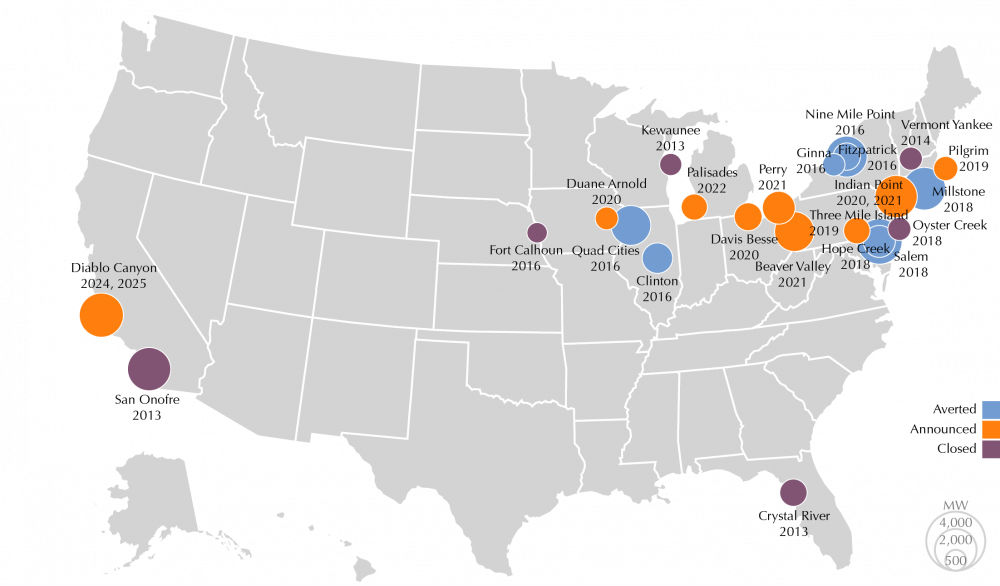This is a serious issue for the climate. Nuclear power provides 20 percent of U.S. electricity generation and more than 50 percent of its zero-emission generation. When nuclear plants retire today, they are replaced by fossil fuels, sending our emissions in the wrong direction. And, as the recent IPCC report highlights, we may be as little as a dozen years away from seeing a critical threshold crossed – a global temperature rise of 1.5°C above pre-industrial levels. We cannot afford such backsliding. Nuclear plants are just too big and provide too much clean electricity to replace quickly.
That’s why additional solutions are so important.
A potential congressional option is a federal ZEC mechanism using a reverse auction. Under this proposal, nuclear plants would bid for the ZEC price they need to continue to operate. Ideally, the total amount of available funding would not be made public. Thus, plants would have an incentive to bid their true costs, lowering the requisite government outlay. A U.S. Department of Energy (DOE) cost analysis indicates that the revenue shortfall would be less than the social cost of carbon – estimated at $42 — for almost all of the struggling facilities. In order to qualify for the auction, plants would be financially screened by the DOE or U.S. Treasury. It is likely that this option would be cheaper and able to save more plants than individual state programs alone.
Additionally, there are promising solutions from wholesale power markets. In New York, the Independent System Operator (ISO) is looking to incorporate the cost of carbon in the form of a “carbon adder” to its wholesale power market. This would make higher-emitting power sources more expensive than lower-emitting ones. And, because lower-emitting power sources pay a lesser carbon adder, or none at all, lower-emitting New York power sources, including efficient fossil units, renewables, hydropower, and nuclear generators, would benefit.
Meanwhile, other market proposals apply value to non-carbon attributes like reliability and resilience, which could ultimately benefit the climate. In order to level the playing field, markets have to be technology agnostic, but they can identify and reward desirable generator attributes beyond being carbon-free. In the brief, C2ES discusses an alternative paradigm for market price setting. Today, the market price is set by the most expensive generator necessary to meet the level of demand – typically a coal- or natural-gas fired unit. With historically low natural gas prices, wholesale power markets can make it challenging for some nuclear units to cover their operating costs. An alternative mechanism would consider if a generation unit is deemed necessary for reliability purposes. If so, then that unit would set the market price (i.e., based on the unit’s total operating costs) during that time period. That practice would ensure that economically challenged units, necessary for reliability purposes, would not be operating at a loss and, in the case of nuclear, could continue to provide environmental benefits.
As the recent IPCC report highlights, we need to rapidly decarbonize if we are to avoid the worst effects of climate change. To meet that challenge, we’re going to need a raft of policies that support maintaining and deploying zero-emission electricity sources to the greatest extent possible.

